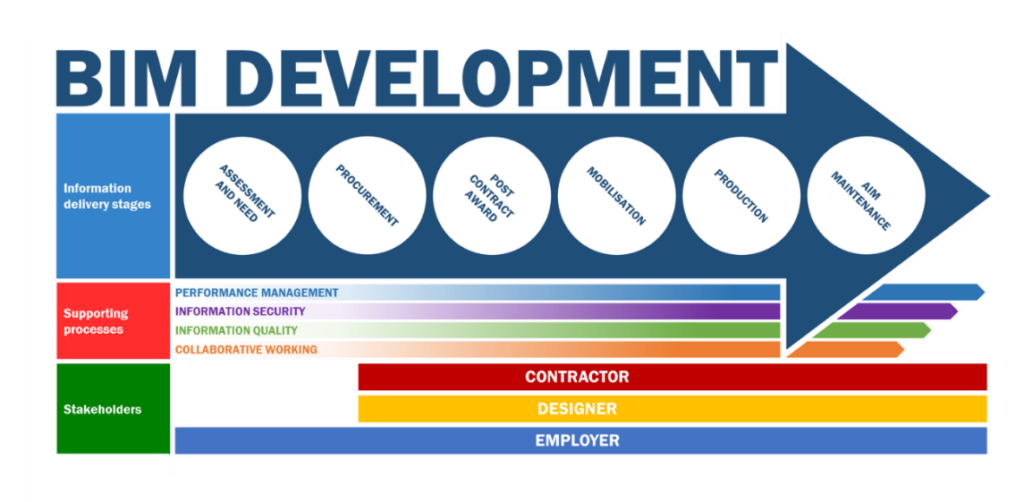The BIM methodology application in public procurement/tenders
Experts point out that the transition to a BIM-based construction sector requires the development of a classification of objects concerning the terms of contracts awarded in the course of public procurement and annexes to the documentation of works performed.
The transition to BIM-based procurement can increase information flows and should be taken into account when purchasing or updating technical or software resources.
The growth of information volumes could be conditioned by more specific requirements for the participants of public procurement tenders for construction design and contracting services to use special information modeling tools. The use of such systems is provided for in EU public procurement law. It states that the contracting authority and the supplier may communicate and exchange information by means other than the Central Procurement Information System, where the nature of the procurement requires the use of special information system tools and equipment that are not commonly used. This provision of the law is based on the 2014 February 26 Directive 2014/24 / EU of the European Parliament and of the Council on public procurement was adopted (Article 22 (4)). Access to these facilities must be provided by the contracting authority and the access granted is appropriate if the contracting authority has done the following:
- Granted free of charge, unrestricted and full direct access by electronic means to those tools and equipment from the date of publication of the contract notice or the call for expressions of interest and indicated in that notice or invitation the internet address at which those tools and equipment are available.
- Ensured that tenderers who, for reasons beyond their control, do not have access to the necessary tools and equipment or are unable to obtain such access in a timely manner can participate in the procurement procedure using the temporary gratuitous access codes provided.
- Provided an alternative channel for electronic submission of proposals.
Given the fragmentation of the construction sector and its dependence on public procurement, lowest-cost procurement practices and the associated negative consequences, the possibility of requiring the use of building information modeling tools in public procurement of design and contracting services could be an important tool for shaping change in the construction sector. The use of a single building model within public procurement activities could improve the efficiency of cooperation between the customer and potential service providers and reduce the volume of documentation and work by inspecting, coordinating, and transmitting building information.
The practice of the European Union or the countries of the European Economic Area with regard to public procurement in the context of BIM is partly reviewed in the performance report of the second work package (reviewed in the UK, Norway, Finland, the Netherlands, Poland, Denmark). Although within the framework of this specific task the possibilities of applying the BIM methodology in other European Union countries have been examined, it can be said that both the EU and the European Economic Area countries have the same EP and ET directives, which update information resources from time to time.
In conclusion, it should be noted that the essential system used in the context of public procurement during the implementation phase of the BIM project should be examined in the section of readiness to carry out procurement in accordance with the BIM principles, preparing recommendations for possible changes. The evaluation must also consider, as far as possible, the results of the project “Modernization of the EU Central Public Procurement Information System”, i.e., to assess not only the current but also the future / planned situation in order to be able to influence the development of the said system as much as possible. The aspects discussed in the impact assessment of the application of the BIM methodology, such as the different readiness (and need) of different contracting authorities to conduct public procurement according to the high maturity BIM methodology, should also be assessed. The assessment must include:
- system functionality.
- technical characteristics of the system (information processing capabilities, security, and other relevant aspects).
- supported diversity of data/information provided.

